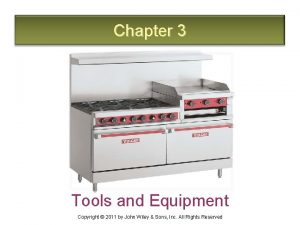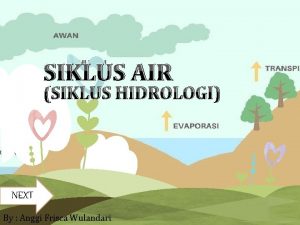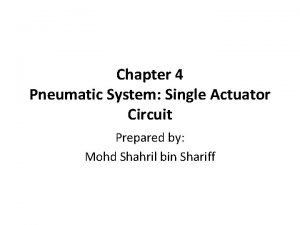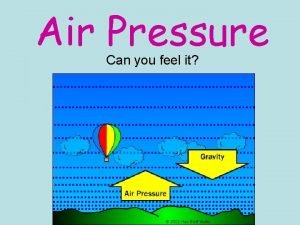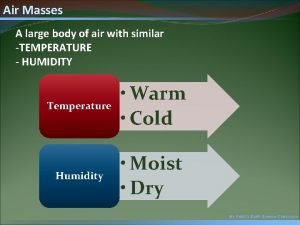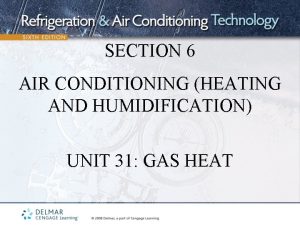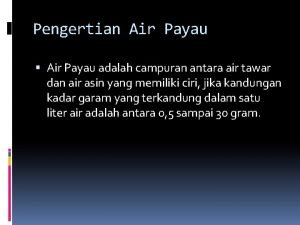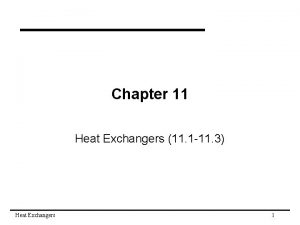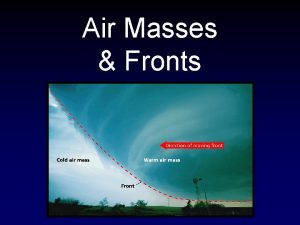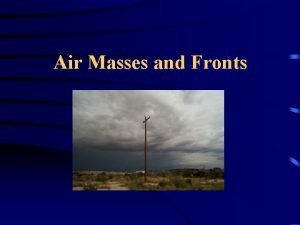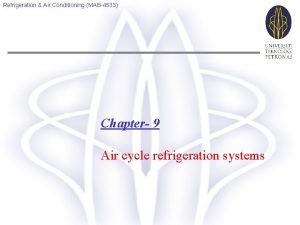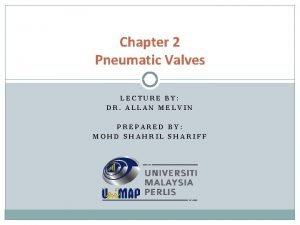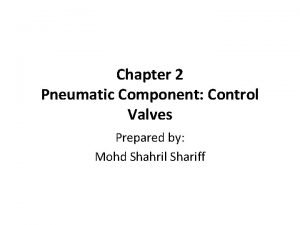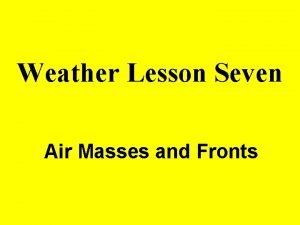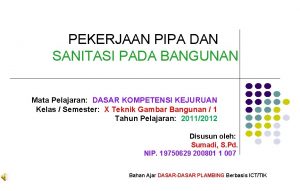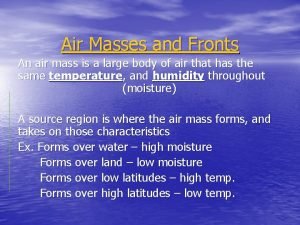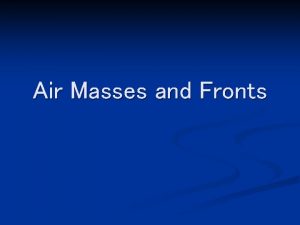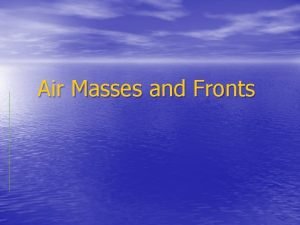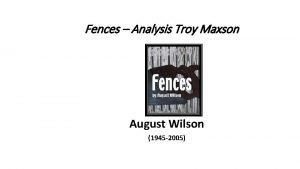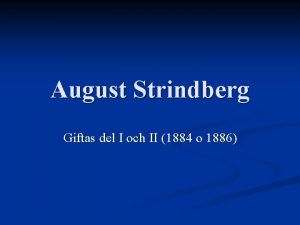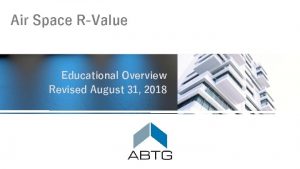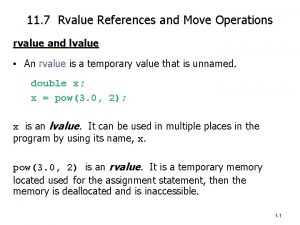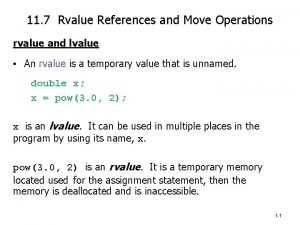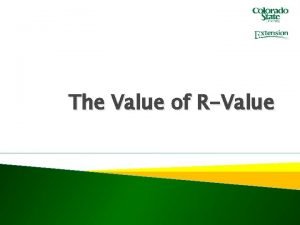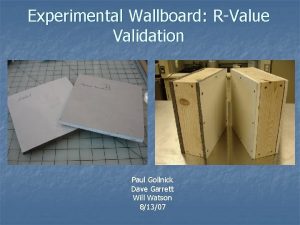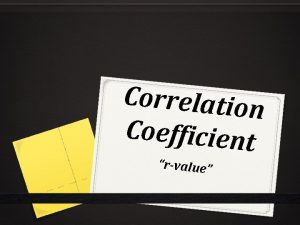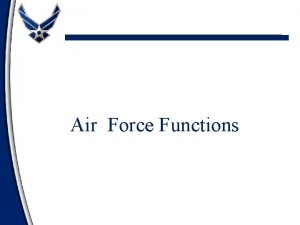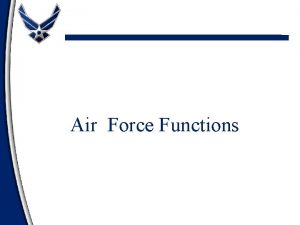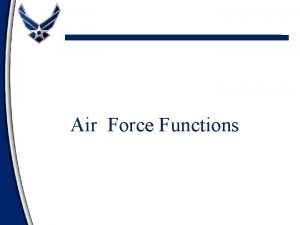Air Space RValue Educational Overview Revised August 31









































- Slides: 41

Air Space R-Value Educational Overview Revised August 31, 2018

Applied Building Technology Group (ABTG) is committed to using sound science and generally accepted engineering practice to develop research supporting the reliable design and installation of foam sheathing. ABTG’s educational program work with respect to foam sheathing is supported by the Foam Sheathing Committee (FSC) of the American Chemistry Council. ABTG is a professional engineering firm, an approved source as defined in Chapter 2 and independent as defined in Chapter 17 of the IBC. DISCLAIMER: While reasonable effort has been made to ensure the accuracy of the information presented, the actual design, suitability and use of this information for any particular application is the responsibility of the user. Where used in the design of buildings, the design, suitability and use of this information for any particular building is the responsibility of the Owner or the Owner’s authorized agent. Foam sheathing research reports, code compliance documents, educational programs and best practices can be found at www. continuousinsulation. org. Copyright © 2018 Applied Building Technology Group

Introduction § Airspaces contained within building envelope assemblies are known to contribute to thermal performance. § But, the actual R‑value for an airspace can vary by a factor of 3 or more depending on conditions of use. § This presentation provides: • a means to properly characterize an airspace according to its use conditions • a method to specify or confirm an appropriate airspace R-value for energy code and FTC R-value Rule compliance.

Scope § This presentation applies to both reflective and non-reflective airspaces. • Note that reflective airspaces have greater potential R-values as well as a stronger dependency on airspace conditions. § While the focus here is on airspaces in wall assemblies, the same principles apply elsewhere, such as in ceiling, roof, and floor applications.

Technical Basis § This presentation is based on a Research Report which: • • • Documents current scientific knowledge Reviews current energy code and Federal Trade Commission’s “R-value Rule” requirements Provides detailed guidance for appropriate airspace R-value characterization and limitations of use.

Significance § Mischaracterized airspace R‑values can result in: • • • § energy code and FTC R-value Rule non-compliances poor performing assemblies (less energy savings than claimed or expected) diminished reputation False R‑value claims for home insulation products are costly • Fines accrue by $11, 000 per occurrence under the Federal Trade Commission’s (FTC) “R-value Rule”

Factors Affecting Airspace R‑value § Airspace R‑value is affected by a variety of factors • • § Items 1 -6 can affect the R-value by a factor of four or more. Item 7 can reduce the R-value by a factor of as much as six Items 4 and 7 are often ignored when making R‑value claims. 1. 2. 3. 4. 5. 6. 7. Size and orientation of the airspace Shape of surfaces forming the airspace Reflectivity (or emissivity) of the surfaces facing the airspace For reflective airspaces, the durability and degree of fouling of the reflective surface over time. Direction of heat flow relative to airspace orientation (i. e. , seasonal change in heat flow direction) Natural convection (movement of air within the airspace due to thermal gradients) Mass air exchange with the airspace due to air leakage or venting of the airspace (caused by wind- and buoyancy-driven pressure differentials).

Factors Affecting Airspace R‑value § Item 4: Aging and durability • • • Sources estimate that the R-Value of reflective foils can decrease anywhere from 10 -50% R-Value degrades due to staining, dust, or other fouling issues Degree of impact depends on conditions of use such as exposure to dust and condensation.

Factors Affecting Airspace R‑value § Item 7: Mass air exchange • • This is particularly important for airspaces that are not fully enclosed and sealed to prevent air leakage as required by the ASHRAE Handbook of Fundamentals (HOF) for use of “ideal” airspace R-values. Using “ideal” airspace values for non-ideal airspaces results in inflated R-values, and does not comply with energy code and FTC R-value Rule requirements. § “b …Values apply for ideal conditions (i. e. , air spaces of uniform thickness bounded by plane, smooth, parallel surfaces with no air leakage to or from the space) …” [p 26. 14 ASHRAE HOF]

Factors Affecting Airspace R‑value § § Air‑leakage is particularly problematic for airspaces located behind cladding Studies on actual cladding installations have benchmarked cladding airspace ventilation rates in the field • The results show air exchange rates approaching 400 air-changes-per-hour (ACH) or greater.

Factors Affecting Airspace R‑value § ACH depends on a number of factors, including: • • • Depth and height of air-cavity behind cladding Size and location of vent openings in cladding Continuity of the vent openings (continuous or intermittent) Presence of bug screens or obstructions in vent openings Wind speed conditions and orientation to the building, Temperature differentials (seasonally varying, also solar-driven)

Factors Affecting Airspace R‑value § Typical cladding ACH values: • • Ventilated stucco cladding with a ¾” air cavity: 100 to 150 ACH 1. 5” air cavity behind brick veneer ― With bug screens: 2 to 3 ACH ― Without bug screens: 20 to 30 ACH

Factors Affecting Airspace R‑value § § The ACH impacts both the moisture control performance of cladding (ventilation) as well as thermal resistance of the airspace (R‑value) Unfortunately, improving moisture performance by increasing ventilation/ACH serves to reduce the R‑value of the airspace.

Factors Affecting Airspace R‑value § On the other hand, keeping bugs out of walls helps maximize airspace R‑ values • Adding bug screens obstructs air flow behind cladding, improving the R-value of a ventilated airspace

Regulatory Requirements § The International Energy Conservation Code (IECC) and International Residential Code (Ch. 11) reference the FTC R‑value Rule as the basis for insulation R‑value ratings used in commercial and residential building construction.

Regulatory Requirements § 460. 5 R-value tests (FTC R-value Rule). … § The FTC R‑value Rule allows two options for determining R‑value of an airspace associated with a specific product: • • Use of the ASHRAE HOF tabulated or calculated R-values for “ideal” reflective airspaces (i. e. , “no air leakage to or from the airspace”) If the airspace does not meet the ASHRAE HOF conditions, then it must be tested in accordance with ASTM C 1363 (hot-box text) and ASTM C 1224. (b) Single sheet systems of aluminum foil…To get the R-value for a specific emissivity level, air space, and direction of heat flow, use the tables in the most recent edition of the American Society of Heating, Refrigerating, and Air-Conditioning Engineers’ (ASHRAE) Fundamentals Handbook, if the product is intended for applications that meet the conditions specified in the tables. (c) Aluminum foil systems with more than one sheet, and single sheet systems of aluminum foil that are intended for applications that do not meet the conditions specified in the tables in the most recent edition of the ASHRAE Fundamentals Handbook, must be tested with ASTM C 1363– 97, ‘‘Standard Test Method for the Thermal Performance of Building Assemblies by Means of a Hot Box Apparatus, ’’ in a test panel constructed according to ASTM C 1224– 03, ‘‘Standard Specification for Reflective Insulation for Building Applications, ’’ and under the test conditions specified in ASTM C 1224– 03. To get the R-value from the results of those tests, use the formula specified in ASTM C 1224– 03. (d) For insulation materials with foil facings, you must test the R-value of the material alone (excluding any air spaces) under the methods listed in paragraph (a) of this section. You can also determine the R-value of the material in conjunction with an air space. You can use one of two methods to do this: (1) You can test the system, with its air space, under ASTM C 1363 -97…. (2) You can add up the test R-value of the material and the Rvalue of the air space. To get the R-value of the air space, you must follow the rules in paragraph (b) of this section.

Regulatory Requirements § However, some cladding airspace R‑ values may still not be evaluated properly: • • • The airspace may not comply with conditions specified in the tables of the HOF. ASTM C 1224 only addresses the use of reflective insulation products in the cavity of a wood frame wall. ASTM C 1363 does not include a means to address air-flows in vented or ventilated airspaces behind cladding materials.

Regulatory Requirements § For commercial building energy efficiency, the 2018 IECC now offers guidance on the use of airspaces to comply with Section C 401. 2, and addresses the limitation of the ASTM C 1363 test with regard to airspaces behind cladding materials by modifying the test to incorporate an airflow of 70 mm/second through the airspace:

Regulatory Requirements § Previous versions of the IECC also reference ASHRAE 90. 1 as an optional energy code compliance path for commercial buildings:

Regulatory Requirements § § § In addition to the FTC R‑value Rule, buildings designed in accordance with ASHRAE 90. 1‑ 2016, must comply with its airspace requirements. These requirements are new in the 2016 edition of ASHRAE 90. 1 (based on Addendum ac to the 2013 edition). Similar provisions are being considered for the 2018 edition of the IECC.

Regulatory Requirements § To use tabulated ideal R‑values in Section A 9. 4. 2 of ASHRAE 90. 1, airspaces must be, among other things, “enclosed in an unventilated cavity designed to minimize airflow” • Enclosed airspaces located to the interior of a building assembly’s continuous air barrier layer and bounded on all sides are “deemed” to minimize airflow. § Thus, airspaces behind cladding (or other leaky or vented airspaces) are excluded and R‑values must be determined by testing per ASTM C 1363. • Similar to requirements of the FTC R-value Rule in regard to use of ideal R-values from ASHRAE HOF.

ASTM C 1363 Testing (Example 1) § § ASTM C 1363 benchmark testing evaluated the R‑value of a reflective airspace behind vinyl siding, as required for “non‑ideal” airspaces per IECC, ASHRAE 90. 1, and the FTC R‑ value Rule Wall assemblies were tested in a sequential “build‑up” fashion to allow the air‑space R‑value to be isolated. § Test assembly includes: • • • 2 x 4 studs Cavity insulation Wood structural panel sheathing Reflective insulation house wrap Vinyl siding

ASTM C 1363 Testing (Example 1) § § The difference between test #1 and test #3 shows that the R‑value contribution of the reflective insulation wrap, airspace, and vinyl siding is approximately R‑ 1. 3. This suggests that the reflective airspace and vinyl siding contributed not more than about R‑ 0. 3 given that the reflective insulation wrap itself had a nominal R‑value of about R‑ 1. 0 based on the difference between test #1 and test #2.

ASTM C 1363 Testing (Example 1) § § In tests #3 through #5, variation in exterior side uniform air‑flow in the hot‑box chamber has little effect on the measured thermal performance of the overall wall assembly (and thus the airspace R‑value). This finding demonstrates the true purpose of the airflow in the ASTM C 1363 test…(next slide)

ASTM C 1363 Testing (Example 1) § § The airflow creates a mixing effect, intended to standardize the outdoor air‑film condition on the surface of the test assembly. It does NOT induce pressure differences or air exchange as would occur on an actual building exposed to wind.

ASTM C 1363 Testing (Example 1) § § Based on the difference between test #1 and #6, the R‑value of a non‑ reflective air‑space and vinyl siding provides an R‑value of about R‑ 0. 64. It appears that a reflective surface in a very leaky air space provides little to no thermal benefit in comparison to an air‑space formed with non‑ reflective surfaces

ASTM C 1363 Testing (Example 1) § The ASHRAE HOF (Table 1 below) reports an R‑value of R‑ 0. 62 for hollow‑backed vinyl siding over sheathing which is consistent with the ASTM C 1363 benchmark test data.

ASTM C 1363 Testing (Example 1) § However, HOF Table 1 also reports an R‑value of R‑ 2. 96 for “foil‑backed” vinyl siding, inconsistent with the test data. • • This R-value for reflective airspaces behind vinyl siding appears to based on an inappropriate and non-compliant assumption of an “ideal” (no air leakage) airspace It should be corrected and not be used for code compliance.

ASTM C 1363 Testing (Example 2) § § Since ASTM C 1363 does not currently account for airflow in airspaces behind cladding, test results may overstate R‑value of “non‑ideal” airspaces. However, one test project appropriately modified the setup to include a means of inducing a ventilation air‑flow (7 cm/s) in the 1” airspace behind a typical brick veneer installed over semi‑reflective building wrap material.

ASTM C 1363 Testing (Example 2) § § Though the heat flow through the ventilation air‑flow was not accounted for in the analysis of the test data, the data and results can be evaluated to properly account for the effect of air‑flow on the actual R‑ value of this common type of “non‑ ideal” airspace An ASHRAE research project is underway to investigate appropriate air‑flow rates and advance this potential modification to the ASTM C 1363 test method.

Airspace Types § Different airspace types require different approaches to qualify code‑ compliant R‑values:

Airspace Types – Ideal § § Ideal airspaces must be sealed (no air leakage to or from the airspace) Must comply with ASHRAE HOF limitations in Chapter 26, Table 3, footnote ‘b’: • “…having a uniform thickness bounded by plane, smooth, parallel surfaces with no air leakage to or from the space”

Airspace Types – Enclosed Case 1 § Enclosed (Non‑ideal) Case 1 airspaces have minimized air leakage, which means they are: • • • Enclosed in an unventilated cavity on the interior side of the continuous air barrier Bounded on all six sides by building components Based on ASHRAE 90. 1 -2016 Section A 9. 4. 2 ― For non-uniform thickness, use the average thickness to determine an average R-value.

Airspace Types – Enclosed Case 2 § Enclosed (Non‑ideal) Case 2 airspaces have uncontrolled air leakage, which means: • • They do not qualify as an ideal or Case 1 airspace An example would be an airspace behind cladding

Determining R‑value – Ideal Airspaces § Different methods are used to determine R‑value for an ideal airspace greater or less than ½” thick • • For an Ideal airspace ≥ ½” thick, use ASHRAE HOF (Ch. 26), Tables 2 and 3. Unless use conditions dictate otherwise, R -values should be based on a mean temperature of 50 o. F and a temperature difference of 30 o. F, to most closely match ASTM C 1224

Determining R‑value – Ideal Airspaces § For an Ideal airspace < ½” thick: • Testing – ASTM C 1363, plus ASTM C 1224 (if reflective). ― For horizontal or sloped airspaces, testing shall include both upward and downward heat flow for separate R-values. • Calculation – In accordance with ASHRAE HOF Ch. 4 equations for combined radiation and convective heat flow, including applicable directions of heat flow.

Determining R‑value – Case 1 § Enclosed Airspace R‑value Case 1 (minimized air leakage), use one of the following: • Prescriptive – Determine R-value per ASHRAE 90. 1 -2016 Section A 9. 4. 2. Airspaces less than ½” thick shall have no R-value. The Rvalue for airspaces between 3. 5” and 12” thick shall use 3. 5” thickness as basis. • Testing – Determine R-value per ASTM C 1363 (including ASTM C 1224 for reflective airspaces) for applicable directions of heat flow.

Determining R‑value – Case 2 § Enclosed Airspace R‑value Case 2 (uncontrolled air leakage), use one of the following: • Prescriptive – The R-value of the airspace and any material to the exterior side (e. g. cladding) shall be taken as zero. An exterior air film R-value may be applied. • Testing – Determine R-value per ASTM C 1363 with modification to induce ventilation air-flow (min. 7 cm/s). Analysis of the assembly or air-space R-value must account for heat flow through the ventilation air.

Flow Chart for Airspace Type & R‑value Determination

Conclusion § Many variables and conditions affect the R‑value of airspaces. § Actual airspace R‑values can vary substantially from published values based on idealized conditions. § Research has shown that non‑ideal airspace conditions can have significant impacts on thermal performance, particularly for airspaces behind cladding materials. § Many applications of non‑ideal airspaces still errantly rely on ideal airspace assumptions to derive R‑values for energy code compliance. § The evaluation recommendations provided herein will help ensure code‑compliance and more accurate assessment of airspace R‑ values.

Suggested Resources § Continuous Insulation ‑ Air Space R‑Value § Continuous Insulation ‑ Thermal Insulation
 Air higroskopis adalah
Air higroskopis adalah Cartesian space trajectory planning
Cartesian space trajectory planning Space junk the space age began
Space junk the space age began Camera space to world space
Camera space to world space Cartesian space vs joint space
Cartesian space vs joint space World space to screen space
World space to screen space This operates simply by heating air in an enclosed space.
This operates simply by heating air in an enclosed space. Air di bumi selalu tersedia lantaran adanya
Air di bumi selalu tersedia lantaran adanya Types of reaction in non aqueous solvents
Types of reaction in non aqueous solvents Supply air throttling
Supply air throttling Chapter 12 section 1
Chapter 12 section 1 Can you feel it in the air in the air
Can you feel it in the air in the air Large body of air
Large body of air Two cold air masses converge on a warm air mass
Two cold air masses converge on a warm air mass You put your left hand in
You put your left hand in Awan cumulus nimbus
Awan cumulus nimbus Is methane lighter than air
Is methane lighter than air Right hand in the air left hand in the air
Right hand in the air left hand in the air Pengertian air payau adalah
Pengertian air payau adalah Dtlm heat exchanger
Dtlm heat exchanger Air masses & frontswhat is an air mass?
Air masses & frontswhat is an air mass? Air masses & frontswhat is an air mass?
Air masses & frontswhat is an air mass? Refrigeration and air conditioning cycle
Refrigeration and air conditioning cycle Pneumatic time delay valve symbol
Pneumatic time delay valve symbol Pneumatic flow control valve diagram
Pneumatic flow control valve diagram Maritime tropical air mass symbol
Maritime tropical air mass symbol Air temperature
Air temperature Denah sanitasi air bersih dan air kotor
Denah sanitasi air bersih dan air kotor A swirling center of low air pressure is called
A swirling center of low air pressure is called Chapter 12 air section 1 what causes air pollution
Chapter 12 air section 1 what causes air pollution Cold air mass overtakes warm air mass
Cold air mass overtakes warm air mass Air masses & frontswhat is an air mass?
Air masses & frontswhat is an air mass? Air masses & frontswhat is an air mass?
Air masses & frontswhat is an air mass? Stationary front
Stationary front Do que miranda, amiga de via, chamava august?
Do que miranda, amiga de via, chamava august? Julie august
Julie august It was late summer 26 august 1910
It was late summer 26 august 1910 Fences character analysis
Fences character analysis Kaugnayan sa kaligirang pangkasaysayan ng el filibusterismo
Kaugnayan sa kaligirang pangkasaysayan ng el filibusterismo Leerexpert august leyweg 4
Leerexpert august leyweg 4 August strindberg giftas
August strindberg giftas August gailiti romaan
August gailiti romaan






